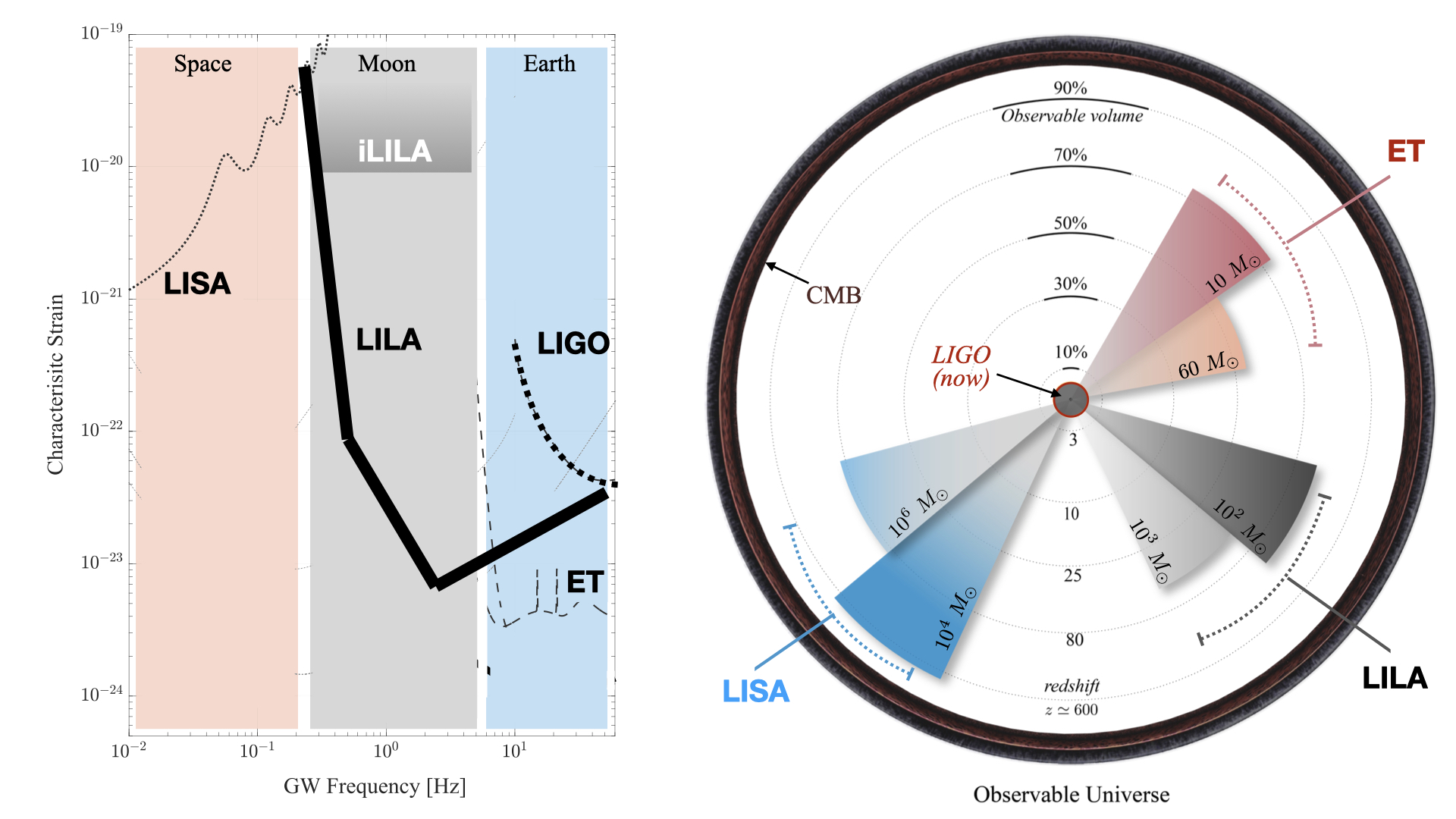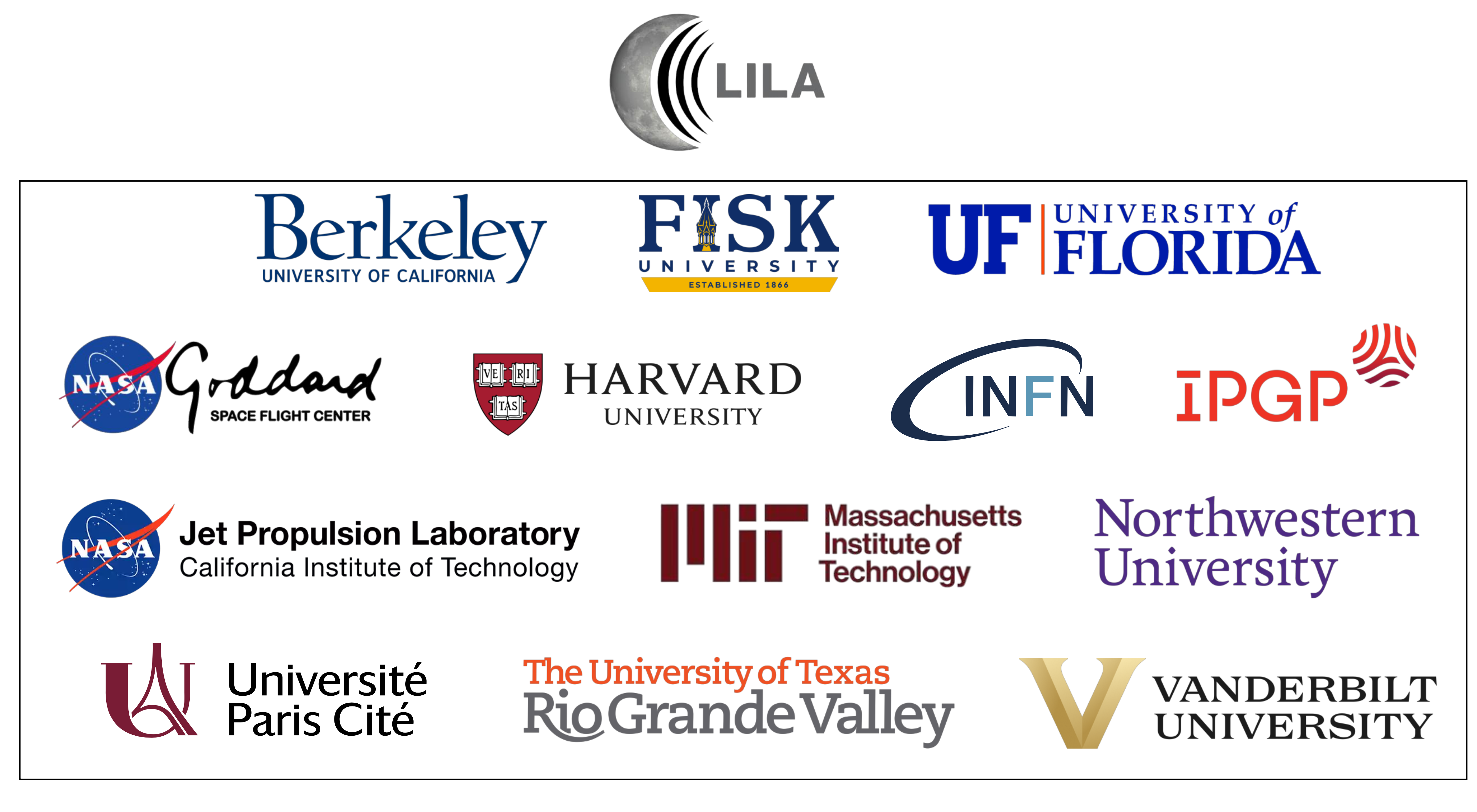What is LILA?
The Laser Interferometer Lunar Antenna (LILA) is a proposed next-generation gravitational-wave detector on the surface of the Moon. A flagship project of the Vanderbilt Lunar Labs, the LILA detector aims to open a new window into the invisible universe by making the first-ever measurement of gravitational waves in the sub-Hertz frequencies.
Why gravitational waves?
For hundreds of years, the only way humans could observe the cosmos was through electromagnetic waves (light, radio, X-ray). In 2015, for the very first time, we got a fundamental new window into how the universe works, through the Laser Interferometer Gravitational-Wave Observatories (LIGO). Instead of measuring light, detectors like LIGO measure gravitational waves: ripples in the fabric of spacetime caused by astrophysical objects like black holes and neutron stars.
How is LILA different?
LILA is a first-of-its-kind interdisciplinary project between the astrophysics, geoscience, and lunar exploration communities. It will be the first detector capable of measuring the “Hidden Gap” of gravitational waves at the sub-Hertz frequencies, that cannot be observed by detectors on the Earth or from space. LILA will have several firsts: it will be the first weeks-ahead early-warning system for observing binary neutron star mergers, grant the first opportunities for measuring Type Ia supernovae progenitors, and give us the data to create the first survey of intermediate-mass black holes to Dark Ages.
Building LILA also promises significant insight into how radiation affects instrumentation on the lunar surface and prompts us to solve pressing questions like how to build science-driven infrastructure on the Moon using minimal resources, how to ensure that what we build survives the lunar environment, and how we protect the Moon for astronomy.

Why build LILA on the Moon?
Our moon is naturally suited to hosting a gravitational-wave detector. It is seismically much quieter than Earth, and is not corrupted by environmental and human noise. This makes measuring gravitational waves significantly less complex. The ultra-high vacuum right above the lunar surface and around craters provide a several kilometers long baseline for any gravitational-wave interferometer, which is extremely challenging and expensive to achieve on Earth.
The LILA project will consist of three landers placed in a triangular shape separated by a few kilometers, straddling the edge of a large crater. One lander will act as the base, the other two as end-stations. Each lander will have science payloads of few tens of kilograms, consisting of mirrors, lasers, and a seismic isolation system. As a gravitational-wave detector, LILA can operate autonomously from any location on the Moon. We are currently planning a pathfinder mission to LILA on the surface of the Moon, to demonstrate key technologies.
What is the timeline for LILA?
We are working towards developing the LILA pathfinder mission within this decade. The goal is to have LILA operational in the timescale of two upcoming flagship gravitational-wave projects: the joint India-US LIGO detector at high frequencies, and ESA’s space-mission LISA at low frequencies. Combining the capabilities of these missions will usher in a new frontier of multi-wavelength gravitational-wave astronomy.

Interested in joining the LILA community?
Several institutions and researchers across the US and Europe are involved in building an inclusive LILA community. The current LILA team comprises experts in experimental gravitational physics, multi-messenger astrophysics, planetary geoscience, radiation hardening, and lunar exploration. A list of collaborating institutions in LILA studies and proposals is listed below.
To learn how to engage in the LILA community, please email lunarlabs@vanderbilt.edu.

